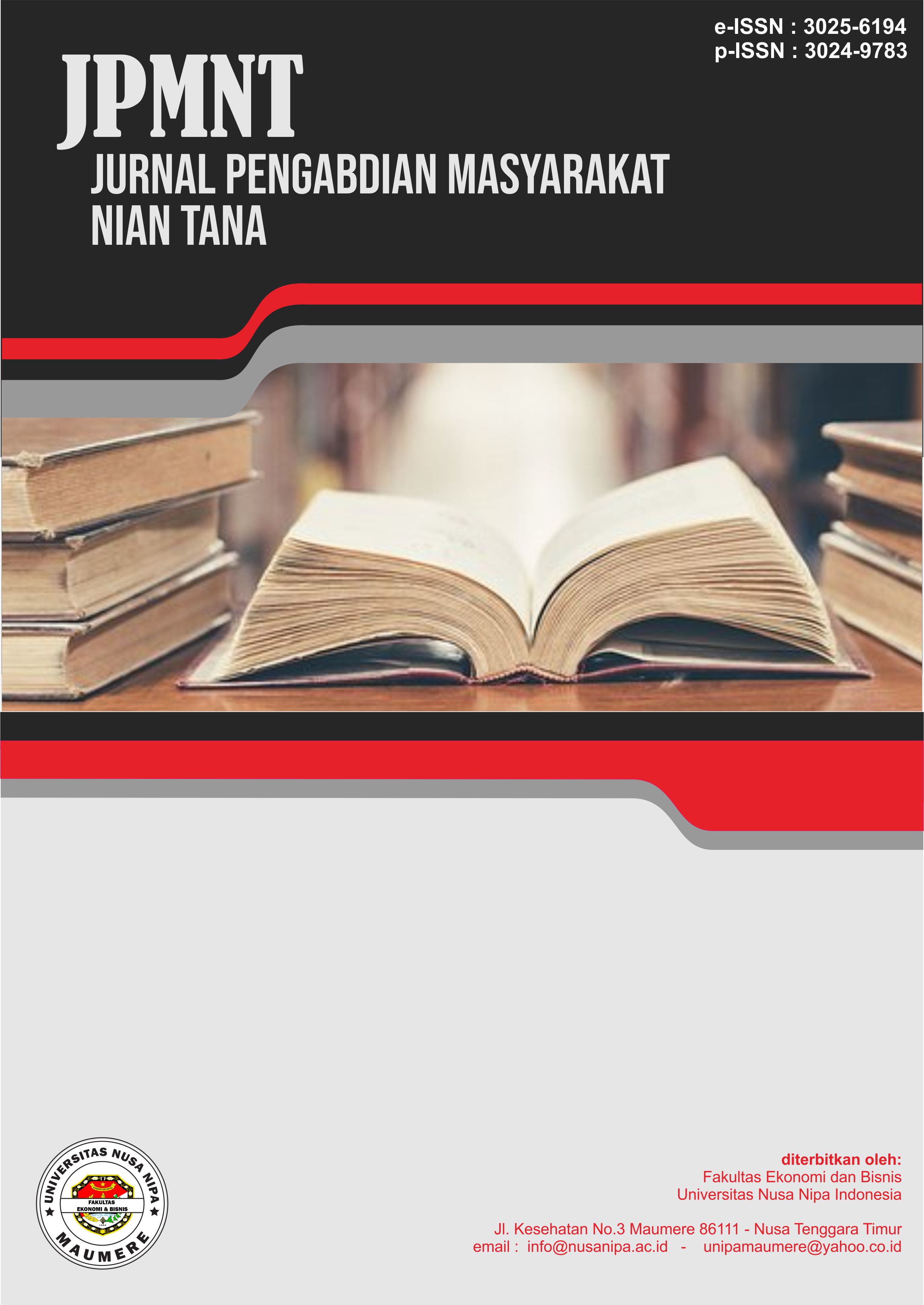Edukasi Simulasi Pertolongan Pertama Kegawatdaruratan Pre-Hospital Dengan Kasus Sesak Napas Pada Siswa Di SMK Hasanuddin Pare Kediri
DOI:
https://doi.org/10.59603/jpmnt.v3i1.661Keywords:
First Aid, Pre Hospital Emergency, DyspneaAbstract
Shortness of breath or dispnea is one of the respiratory emergencies that is often encountered in society, including in the school environment. Students need to know first aid for shortness of breath so they can handle it well in the pre-hospital phase. The aim of this community service activity is to form a cadre of students who are able to educate themselves on first aid for shortness of breath through simulations and for service participants to know first aid for shortness of breath. The method of implementing this activity was carried out through lecture and simulation methods involving 4 cadres and 21 student participants from Hasanuddin Pare Vocational School. This activity was carried out on 10 - 12 October 2024. The service activities were carried out in 2 sessions where the first session was cadre empowerment through cadre training activities regarding first aid for shortness of breath and the second session was the presentation of material by trained cadres which was delivered to community service participants. The results of this community service activity were that trained cadres were able to deliver the material well and there was an increase in participants' knowledge and ability to provide first aid for shortness of breath after simulation education was carried out by trained cadres. Education using a simulation approach can increase students' understanding of the management of aid for shortness of breath so that they are able to provide first aid appropriately. The educational method with a simulation approach can be used as a medium for delivering information in pre-hospital first aid for cases of shortness of breath in students.
References
Ariyanti, R., Preharsini, I. A., & Sipolio, B. W. (2020). Edukasi Kesehatan Dalam Upaya Pencegahan dan Pengendalian Penyakit Hipertensi Pada Lansia. To Maega : Jurnal Pengabdian Masyarakat, 3(2), 74. https://doi.org/10.35914/tomaega.v3i2.369
Arofi, T. M., Zompi, Z., Syafiyah, L., & Sahaya, N. N. (2023). Pendampingan Dan Pelatihan Sesak Napas Anak Pada Kader Posyandu Melalui Upaya Manajemen Respirasi. Adimas : Jurnal Pengabdian Kepada Masyarakat, 7(1), 51–58. https://doi.org/10.24269/adi.v7i1.5634
Mukarromah, N., Agung, S., Winata, S. G., Rofiqi, E., & Priyantini, D. (2022). J ur n a l K e p e r a w a t a n M u h a m m a d i y a h. 7(3).
Nugraha, D., Amir, M., & Nurkomala, N. (2023). Pengaruh Metode Simulasi Dan Metode Demonstrasi Terhadap Hasil Belajar Mahasiswa. Jurnal Pena Edukasi, 10(1), 1. https://doi.org/10.54314/jpe.v10i1.1094
Rachmania, D., Kartika Sari, M., & Susmiatin, E. A. (2024). Pemberdayaan Kader Dalam Meningkatan Kemampuan Siswa Pmr Dalam Penanganan Pertama Luka Bakar. 03(03), 2963–1343. https://spikesnas.khkediri.ac.id/SPIKesNas/index.php/MOO
Rachmania, D., & Widayati, D. (2022). Strategi edukasi penanganan awal intoksikasi makanan dalam tanggap kegawatdaruratan. 01(02), 393–399.
Susana, P. et al. (2016). Gambaran Karakteristik Kunjungan Pasien Dengan Keluhan Sesak Napas Di Igd Rumah Sakit Swasta Di Temanggung Jawa Tengah. 5, 1–23.
Ukkasah, S. A., Bintang, M., Putra Hengkeng, A., & Tiraninda, N. (2024). Pertolongan Pertama Keadaan Gawat Darurat Pada Penderita Riwayat Penyakit Serangan Jantung Dan Asma. BERNAS: Jurnal Pengabdian Kepada Masyarakat, 5(2), 1511–1518. https://doi.org/10.31949/jb.v5i2.8972
Downloads
Published
How to Cite
Issue
Section
License
Copyright (c) 2024 Jurnal Pengabdian Masyarakat Nian Tana

This work is licensed under a Creative Commons Attribution-ShareAlike 4.0 International License.





